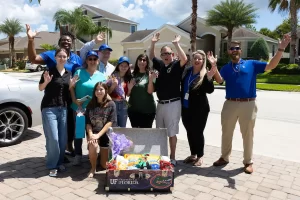Los Niños Héroes (The Boy Heroes)
By Dave Skinner – [email protected] | Le Jardin Ombragé, Tallahassee, Florida, USA http://www.gingersrus.com
As a youngster growing up in the United States, I remember well hearing the stories of Davy Crockett and Jim Bowie defending to their death the Texas fortress called The Alamo. American settlers living in Texas (the Tejanos) sought independence from Mexico to establish an independent Republic of Texas in 1835. The legend of The Alamo has lived on in the popular history of the United States. Eventually, under the leadership of General Sam Houston, the Tejanos defeated the Mexican General Antonio López de Santa Anna at the Battle of San Jacinto in 1836 and declared independence, although Mexico did not recognize the new “Lone Star Republic”.
A few years later, under the expansionist movement called “Manifest Destiny,” the United States sought to expand its territory to the west and create a country that extended from “Sea to Shining Sea”. When James Polk was elected President of the United States, he began a concerted effort to force Mexico into war with the objective to take its territories in present-day California, Arizona, Nevada, Utah, Colorado and New Mexico, as well as to officially accept Texas as the 28th state of the United States. Other prominent Americans such as the young Abraham Lincoln opposed the expansionist effort. I am reading an excellent history of the 1846 U. S. invasion of Mexico, aptly called “A Wicked War” and written by historian Amy S. Greenberg.
In Mexico, September 13 is the day of remembrance for “Los Niños Héroes”. On September 13, 1847, the Veracruz campaign of the Mexican-American War was in its final stages at the Battle of Chapultepec. The Chapultepec Castle had been used as a military training facility, and sits on a high hill overlooking Mexico City. As the battle raged, General Nicolás Bravo’s army retreated, but six teenaged cadets were left behind, and the legend has it that they all fought to their death to defend the castle. According to the legend, one of the cadets, Juan Escutia, wrapped himself in Mexico’s flag and jumped to his death to keep Americans from taking the flag.
As in most legends, there is some question about the veracity of the stories. According to one historian, Juan Escutia was a soldier, not really one of the cadets, and did not throw himself over the castle wall, but rather was shot to death while trying to flee the attacking Americans. Another Mexican historian has written that Los Niños Héroes were left behind because they were under arrest for drunkenness or lack of discipline and by the time they broke out of prison, the Mexican army had already retreated.
Others have defended the legends, producing solid evidence of the names and background of the six cadets. In a 1997 speech at a cultural seminar in Guadalajara, Brigadier General Alfonso Chávez Marín insisted that the stories are true and were only discredited by “money hungry, appeasement-minded politicians who dominated the Mexican government after the disastrous war, and whose main concern was favorable commercial relations with the United States”.
In any case, the legend of Los Niños Héroes serves as a source of pride for the Mexican people, and has even been recognized and honored by American Presidents in visits to Chapultepec. In 1947, President Harry S. Truman made an unscheduled visit that did much to improve relations between the two countries. He placed a wreath at the monument of Los Niños Héroes and stood for a few moments of silent prayer. When asked why he had done so, President Truman replied, “Brave men don’t belong to any country. I respect bravery whenever I see it”.
